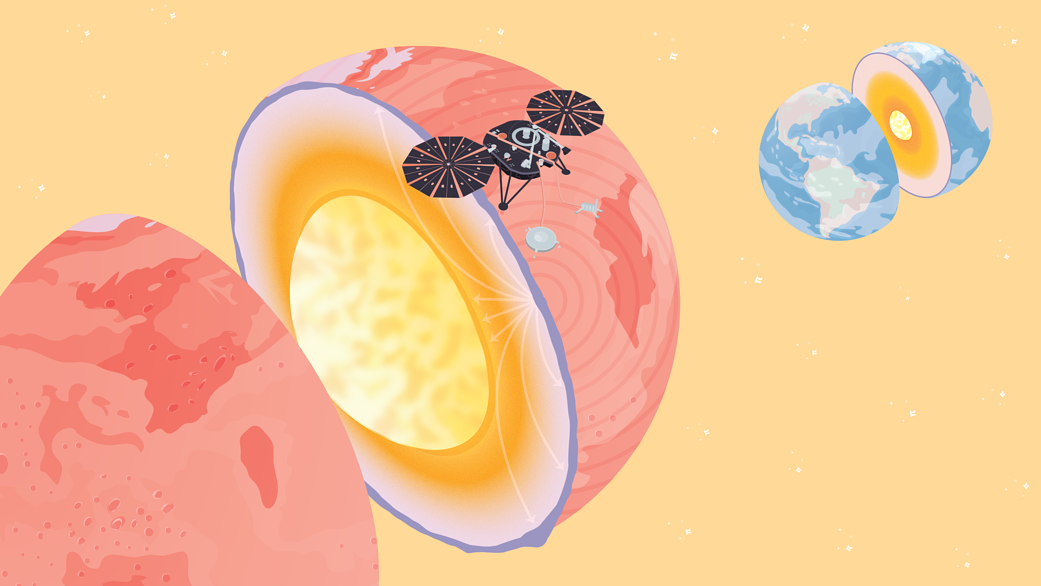Today is Pi Day, March 14, 2022!
Each year NASA celebrates pi with a host of educational activities that focus on its importance to our missions.
This “Pi in the Sky” math challenge gives students a chance to take part in recent discoveries and upcoming celestial events, all while using math and pi just like NASA scientists and engineers. In this problem, students use the mathematical constant pi to calculate the volume and density of Mars’ liquid core.
Since 2018, the InSight lander has studied the interior of Mars by measuring vibrations from marsquakes and the “wobble” of the planet as it rotates on its axis. Through careful analysis of the data returned from InSight, scientists were able to measure the size of Mars’ liquid core for the first time and estimate its density. In Core Conundrum, students use pi to do some of the same calculations, determining the volume and density of the Red Planet’s core and comparing it to that of Earth’s core.
More on the NASA Pi Day Challenge from JPL.
Image Credit: NASA/JPL-Caltech
今天是圆周率日,2022年3月14日!
每年,NASA都会举办一系列教育活动来庆祝π对我们任务的重要性。
这个“太空中的π”数学挑战让学生有机会参与最近的发现和即将到来的天体活动,同时像NASA科学家和工程师一样使用数学和π。在这个问题中,学生们使用数学常数π来来计算火星液体核心的体积和密度。
自2018年以来,洞察号着探测器过测量火星地震的振动和行星绕轴旋转时的“摆动”来研究火星内部。通过仔细分析洞察号返回的数据,科学家们首次测量了火星液体核心的大小,并估计其密度。在核心难题中,学生使用π进行一些相同的计算,确定红色星球核心的体积和密度,并将其与地球核心的体积和密度进行比较。
图片来源:NASA/JPL-Caltech



